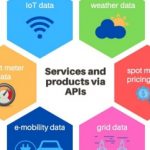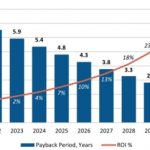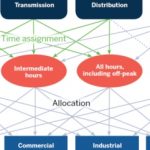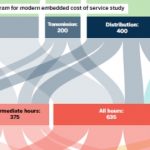The global growth in electrification means grids everywhere are facing new opportunities as well as big challenges. Intermittent renewables, distributed energy generation, and the need to use every kWh as efficiently as possible means Distribution System Operators (DSO), in particular, must deploy optimisation solutions, and fast. Gridspertise provides state-of-the-art solutions for the digital transformation of electricity distribution networks. … [Read more...]
Buildings Efficiency: cars have an “eco mode” button. Why not our homes?
Households need the right tools to be able to take control of their real-time energy consumption, says Maximilian Auffhammer at the Energy Institute at Haas. Smart meters are just too crude. They don’t tell you how much energy individual devices are using – fridges, ovens, heaters, EV chargers, TVs, lightbulbs, toasters, etc. You have to work it out yourself by switching devices on and off and seeing the difference. Auffhammer argues if you price … [Read more...]
Distribution Grid Digitalisation – benefits, policy, cost & funding
About a third of European grids are over 40 years old. A rapid physical overhaul would be impossible, so the addition of a layer of digital technologies is the key to preparing them for the distributed and intermittent generation from renewable sources, the increased electricity demand from transportation, heat pumps and other sectors, and for ensuring energy efficiency at all levels. It’s why the EC expects about €584bn of investment in Europe’s … [Read more...]
Event summary: “45% RES by 2030: EU’s latest investment challenge to DSOs”
Sara Stefanini provides a written summary of our panel discussion held on Thursday June 30th 2022. It’s a full summary of the 90 minute discussion (including audience questions), but it begins conveniently with a summary of the highlights. Investment in and the modernisation of the electricity distribution grid is one the biggest challenges the EU has to overcome in the next decade. It’s a €400bn investment challenge by 2050 says Eurelectric, an … [Read more...]
Manifesto: fit-for-purpose flexible grids for the clean electrification of Europe
The integration of new clean generation sources on top of the increase in electrification of industry, e-mobility, and heating and cooling means grid investment must be made a priority. Anything else will leave deployment-ready solutions waiting, slowing down the transition. The backdrop is that over one third of the EU’s grids are already more than 40 years old. Eurelectric has produced a manifesto, “Connecting The Dots”, that estimates … [Read more...]
Electricity Market Reform: ACER must empower consumers, not just network operators
ACER, the EU Agency for the Cooperation of Energy Regulators, has delivered to the EC its preliminary assessment of Europe's high energy prices and the current wholesale electricity market design. Simon Skillings and Lisa Fischer at E3G interpret ACER’s assessment as showing it wants to maintain the status quo. However, long-term changes in market design are inevitable. The authors want ACER to accept this reality and ensure the changes are … [Read more...]
A marketplace for energy data will enable Europe’s grid expansion
The growth of the decentralisation of energy generation and storage combined with the digitalisation of the metrics of supply and demand is pointing towards a marketplace for energy data, explain Veronika Spurná and Helena Uhde at the EU-China Energy Cooperation Platform. Such a marketplace will monetise the data itself, in recognition of its vital role in enabling the intelligent distribution of energy and investment. There will also be a place … [Read more...]
Nine advantages small-scale solutions have for reducing global emissions
Which is best? Spending your budget on a million 1 KW solar panels or a single 1 GW nuclear/hydro/gas plant? Lots of electric bikes or a single tram system? Lots of smart thermostats or whole-building retrofits? Charlie Wilson (University of East Anglia), Caroline Zimm (IIASA) and Simon De Stercke (Imperial College London) summarise their study that lists the advantages of small-scale “granular” solutions over large-scale “lumpy” ones. Granular … [Read more...]
How do we get EV payback periods down to 4 years?
The take-off of EVs will happen when the lifetime cost of ownership falls below that for a conventional car. But let’s remember that “lifetime” for a Brit means 4 years as that’s the average period of ownership. Gerard Wynn and Arjun Flora at IEEFA show how the payback period on Gerard’s Renault Zoe ZE50 has been cut by over a fifth simply by signing up to a smart meter tariff. It’s dropped from 10 to 8 years. The UK is nearing the universal roll … [Read more...]
The new era of electricity needs modern ways to charge customers
Today’s technologies – wind, solar, storage - have widely differing cost and operating characteristics to fossil fuels. So the way customers are made to cover those costs – assigning different rates to different customer classes – should change. Jim Lazar and Mark LeBel at RAP explain why and how, referencing their comprehensive manual “Electric Cost Allocation for a New Era”. They describe how the full range of technologies now establishing … [Read more...]
Electric utilities: pathway to a costs and pricing revolution
The 20th century method of setting electric utility rates are being made redundant by the new technologies of the modern age. It’s currently a three-step process - determining the revenue requirement, deciding how to divide costs among ratepayers, then designing the rates themselves. It uses traditional categories: generation, transmission and distribution; cost classifications (energy-related, demand-related, customer-related); customer/rate … [Read more...]












